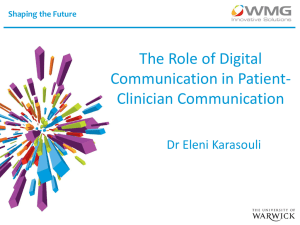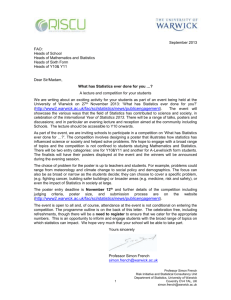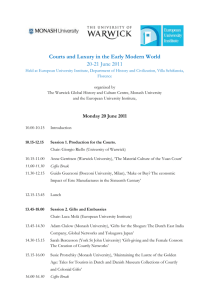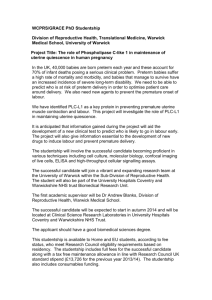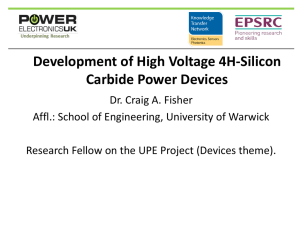Electronics, Power & Microsystems Group
advertisement
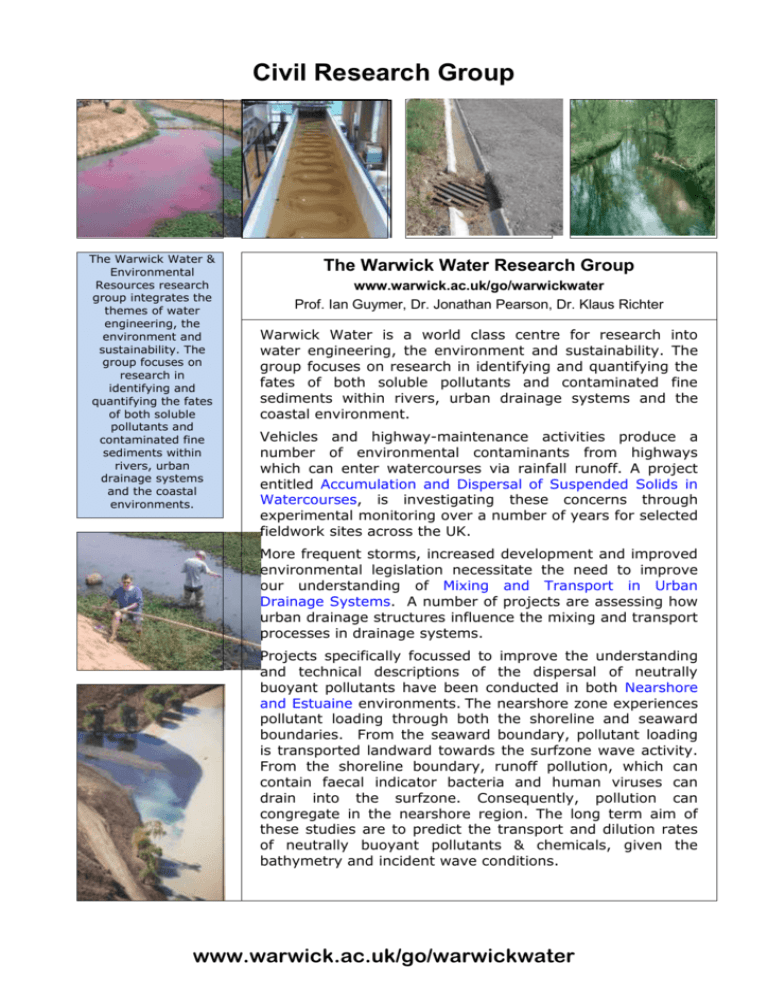
Civil Research Group The Warwick Water & Environmental Resources research group integrates the themes of water engineering, the environment and sustainability. The group focuses on research in identifying and quantifying the fates of both soluble pollutants and contaminated fine sediments within rivers, urban drainage systems and the coastal environments. The Warwick Water Research Group www.warwick.ac.uk/go/warwickwater Prof. Ian Guymer, Dr. Jonathan Pearson, Dr. Klaus Richter Warwick Water is a world class centre for research into water engineering, the environment and sustainability. The group focuses on research in identifying and quantifying the fates of both soluble pollutants and contaminated fine sediments within rivers, urban drainage systems and the coastal environment. Vehicles and highway-maintenance activities produce a number of environmental contaminants from highways which can enter watercourses via rainfall runoff. A project entitled Accumulation and Dispersal of Suspended Solids in Watercourses, is investigating these concerns through experimental monitoring over a number of years for selected fieldwork sites across the UK. More frequent storms, increased development and improved environmental legislation necessitate the need to improve our understanding of Mixing and Transport in Urban Drainage Systems. A number of projects are assessing how urban drainage structures influence the mixing and transport processes in drainage systems. Projects specifically focussed to improve the understanding and technical descriptions of the dispersal of neutrally buoyant pollutants have been conducted in both Nearshore and Estuaine environments. The nearshore zone experiences pollutant loading through both the shoreline and seaward boundaries. From the seaward boundary, pollutant loading is transported landward towards the surfzone wave activity. From the shoreline boundary, runoff pollution, which can contain faecal indicator bacteria and human viruses can drain into the surfzone. Consequently, pollution can congregate in the nearshore region. The long term aim of these studies are to predict the transport and dilution rates of neutrally buoyant pollutants & chemicals, given the bathymetry and incident wave conditions. www.warwick.ac.uk/go/warwickwater

